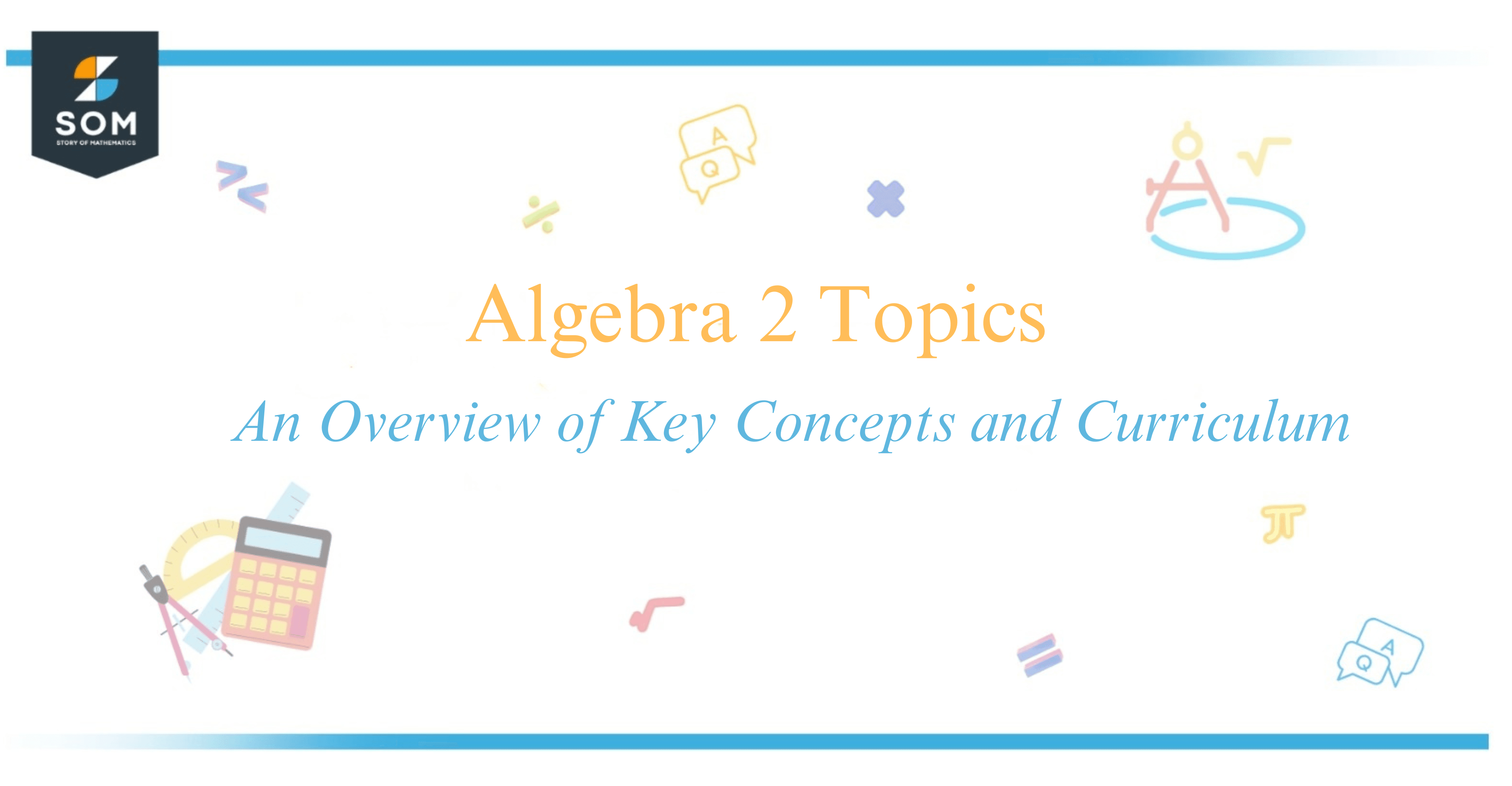
The Algebra 2 is an advanced high school mathematics course that builds on the foundation laid by Algebra 1, diving deeper into algebraic concepts. This course often includes the polynomial arithmetic, where students learn to manipulate polynomials through addition, subtraction, and multiplication.
A significant focus is also on the study of functions, which encompasses understanding the composition, inverse, and transformation of functions, as well as exploring different types, such as linear and quadratic functions.
my journey through Algebra 2 will also take us to the realm of complex numbers, an essential concept that allows for solving equations with no real-number solutions. As I explore these topics, I’ll delve into the characteristics and applications of complex numbers in various mathematical scenarios.
Embracing the challenges of Algebra 2 not only sharpens my problem-solving skills but also prepares us for higher levels of math and real-world applications. Get ready to uncover a multitude of topics that reveal the beauty and complexity of mathematics. Let’s embark on this mathematical adventure together, one equation at a time.
Topics Covered in Algebra 2
In my exploration of Algebra 2, I encounter various mathematical elements that take my understanding of algebra to new heights. Here’s a roadmap of the crucial topics I’ll journey through:
Polynomials: These are expressions containing variables raised to natural number exponents. I handle operations like addition, subtraction, multiplication, and especially factoring.
Complex Numbers: Vital for solving polynomial equations with no real solutions, complex numbers introduce an imaginary unit, denoted as ‘i’, where ($i^2$ = -1).
Exponents and Logarithms: Exponents allow us to express repeated multiplication compactly, while logarithms are the inverses of exponents, important for solving exponential equations.
Functions and Their Transformations: At this stage, I explore different types of functions, including linear, quadratic, polynomial, radical, and exponential functions. I focus on transformations that shift, stretch, or flip their graphs.
Quadratic Equations: Quadratic equations, in the form (a$x^2$ + bx + c = 0), are solved using factoring, completing the square, or the quadratic formula.
Linear and Nonlinear Systems: Systems of equations can be linear or involve quadratic or higher-order polynomial equations. I solve these through graphing, substitution, elimination, or matrix methods for larger systems.
Probability: While not always central, probability concepts may appear, teaching us to gauge the likelihood of different events occurring.
Here’s a glimpse of key function types and associated concepts:
| Function Type | Domain and Range | Inverse | Transformations |
|---|---|---|---|
| Linear Functions | All real numbers | Yes | Translation |
| Quadratic Functions | x is real | Restricted | Parabolic shift |
| Radical Functions | Depends on index | Yes | Reflection |
In covering these topics, I build a robust mathematical foundation, preparing us to approach real-world problems with a diverse set of tools.
Advanced Topics in Algebra 2
In Algebra 2, I dive further into mathematical complexities that lay the groundwork for higher-level math and sciences. My exploration goes beyond quadratic equations and linear functions learned in Algebra 1.

Exponential and Logarithmic Functions: These functions help us describe growth and decay in real-world situations. The Exponential functions, for example, are modeled by ( y = $a \cdot b^{x}$ ), while logarithmic functions are the inverses of exponential functions.
Properties of Logarithms and Radicals: I manipulate expressions using properties like ( $\log_b(m \cdot n) = \log_b(m) + \log_b(n)$ ). We also tackle radical equations ensuring to keep the integrity of roots in solving logarithmic equations.
Rational Expressions, Equations, and Functions: Rational expressions involve ratios of polynomials. I’ll understand operations involving these as well as how to solve rational equations and analyze rational functions.
Trigonometry: Trigonometric functions, such as ( $\sin, \cos$,) and ( $\tan$ ), are central in Algebra 2. I delve into their applications, patterns, and identities which are vital when studying periodic phenomena.
Sequences and Series: Sequences can be arithmetic (with a common difference) or geometric (with a common ratio), leading to series when I sum their terms.
Matrices and Determinants: I extensively use matrix operations for systems of equations and touch on determinants as a means to find matrix inverses or solve linear systems.
Conic Sections: The study of circles, ellipses, parabolas, and hyperbolas illustrates how quadratic equations represent geometrical shapes.
Statistics and Elementary Calculus: Basic principles of statistics are covered, and I get a glimpse into calculus, like rates of change and areas under curves.
In essence, Algebra 2 is comprehensive, preparing us for further studies in mathematics and applications in various scientific domains.
Conclusion
Wrapping up my exploration of Algebra 2, I navigate a rich landscape of mathematics, teeming with both challenge and fascination. I’ve engaged with polynomial arithmetic, where the playfulness of numbers is evident as I combine and break them apart. With complex numbers, my reach extended beyond the real line into a plane where every number finds a home.
I’ve encountered the artful dance of polynomial graphs and the elegance of rational exponent expressions. Through exponential models and logarithms, I saw growth patterns unfold, unveiling the rhythm of nature and finance alike. The transformative power of functions took my understanding from static to dynamic, morphing from one form to another, much like an algebraic metamorphosis.
Trigonometry spun a tale of angles and lengths, linking the circular to the linear, and propelling us into waves that model the world. As I developed a delicate appreciation for the intricacies of sequences and the unfolding of series, we were reminded that mathematics is an endless progression, a sequence of ideas stretching into infinity.
This journey has armed us with analytical tools, not just for academic pursuits but for real-world applications. I’ve become attuned to the language of the universe, and mathematics, allowing us to interpret and influence my surroundings with a newfound clarity.
With these topics tucked in my intellectual toolkit, I stand ready for the challenges ahead, be it in further studies or practical endeavors. So let’s carry forward this knowledge, eager to apply my algebraic expertise wherever it may serve us best.
